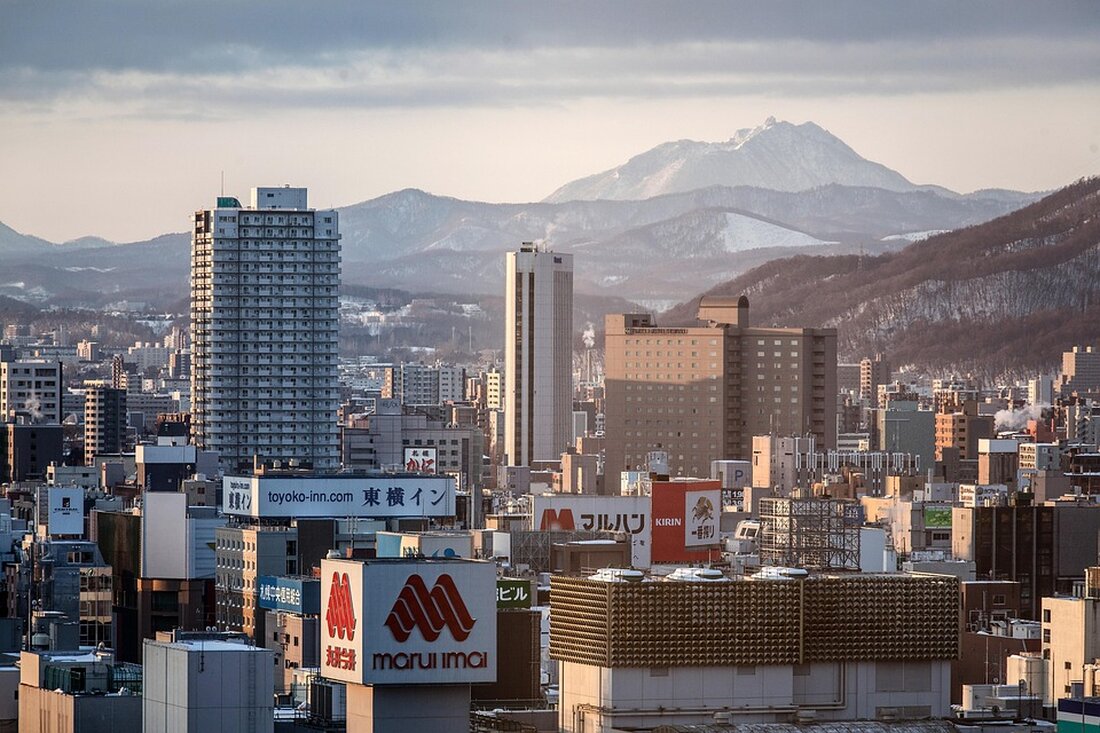Japan: role model for cleanliness, but where are the trash cans?
Japan is considered a role model for cleanliness, but the question remains: Where are all the trash cans? Discover the cultural and practical background of this fascinating topic.

Japan: role model for cleanliness, but where are the trash cans?
Professor Chris McMorran teaches Japanese Studies at the National University of Singapore, where his research focuses on significant topics such as work, gender and marginalized communities. But when he travels to Japan with his students, one central question inevitably arises: Why are there no trash cans here?
The challenge of waste disposal in Japan
This question is particularly common among Western travelers, who come to Japan in ever-increasing numbers every year. How can a country be so clean and organized when there are hardly any options for waste disposal in public areas?
Results of a survey among tourists
McMorran's students aren't the only ones grappling with this question. Earlier this year, the Japan National Tourism Organization (JNTO) conducted a survey of travelers leaving Japan. The most common problem mentioned? The lack of garbage cans. 22 percent of tourists said difficulty finding a place to throw trash was the biggest problem of their trip - ahead of the lack of English speakers (15%) and overcrowding at popular attractions (13%).
Special etiquette in Japan
There are various approaches to solving the garbage disposal problem, but they all concern the special nuances of Japanese etiquette. “These (missing trash cans) can be a nuisance, especially for budget-conscious young travelers,” McMorran said. "Instead of eating at a restaurant, they are more likely to buy an onigiri at a konbini (convenience store) or grab an Instagrammable dessert from a stall. After eating, they then frantically look for a place to throw away their trash."
He notes that while locals also buy food and drinks from vending machines or konbinis, they do not necessarily consume them on the street. It is considered rude to eat while walking, to the point of cities banning the practice entirely have banned. Instead, it's more common to take these food-safe snacks home or to the office, eat them there, and throw them out in the trash. If they do eat on the go, most people have a small bag with them to put their trash in until they get home.
Growth impulses from tourism
Mass tourism brings challenges to the waste situation in Japan. Tourists from around the world flock to the UNESCO-listed city of Nara, a 45-minute shinkansen ride east of Osaka. While Nara is home to famous temples and Buddhist artifacts, its most famous residents are the wild deer, known for taking cookies from visitors and bowing “for their thanks.”
However, garbage became a life-threatening problem for the deer: Nine died 2019 after eating plastic waste left on the ground by tourists. To prevent deer from eating out of the trash cans, they were removed from Nara parks in 1985. Signs throughout the city urged people not to litter because eating trash can be harmful to deer.
Measures taken by the city of Nara
However, as travelers increased, it became clear that the signs were not enough to stop people from leaving their trash. The city reconsidered its policy and recently installed several trash cans in the busiest tourist areas. The solar-powered trash cans are printed with the words “Save the Deer” in English.
Follow in Tokyo and tourist hotspots
Tokyo's chic Shibuya district is also struggling to cope with tourist waste. Local politicians have tightened control over the infamous Halloween celebrations and Drinking alcohol on the street is prohibited, to reduce both noise pollution and the amount of waste.
There are numerous videos about on TikTok Japanese etiquette for travelers, with some tourists comparing Japan to Canada and the US in terms of public hygiene or offering tips on where to find a trash can when you really need one (many vending machines have a small trash can next to them).
Different perspectives of travelers
For some tourists, the lack of easy-to-find trash cans is a charming quirk of Japanese culture. For other visitors, however, it reduces the enjoyment of their trip. Ruben Verebes, a Hong Kong resident, belongs to the latter group. He visited Japan for the first time in September 2024 and expressed frustration at the difficulty of finding a place to dispose of waste.
“It's frustrating walking around Tokyo all day, logging over 20,000 steps, and not being able to find a single trash can to throw the plastic wrapper of my sandwich into,” he says. "Some 7-Eleven, Family Mart or Lawson stores didn't even have trash cans, so you have to walk around all day with these dirty wrappers or bottles until you get back to the hotel. It's great that the streets are clean, but it's annoying having to hold trash all day long."
Insights from travel companies
Paul Christie, CEO of travel company Walk Japan, emphasizes the values of respect and community when answering questions from customers about the lack of trash cans. "Japanese value cleanliness and work together as a society to achieve it. The result is that their country ranks high in order and cleanliness," he explains.
“Ultimately, Japanese communities have decided to avoid the inconvenience and expense of public trash cans, and Japanese consumers have taken on the responsibility of having a disposal plan when they make a purchase.” Japan is also making great strides in recycling, which is another argument in favor of small trash cans. McMorran, the Japanese studies professor, explains that some municipalities have up to 20 different categories for recyclable waste, and even some locals find it difficult to sort and dispose of everything correctly.
A darker story
Beyond the issues of cleanliness and hygiene, there is a sinister reason for the lack of trash cans in public areas. On March 20, 1995, members of the Aum Shinrikyo cult carried out sarin gas attacks on several subway trains in Tokyo, killing 14 people and injuring at least 5,500 others.
The cult members brought plastic bags containing sarin into the subway cars, dropped them on the floor and punctured the bags with rain spikes as they exited the train. Several subway workers who were trying to carry out cleaning work and help passengers were among the victims. This incident shocked Japan and changed the country forever.
One of the consequences was the removal of trash cans from subway and train stations. Although some still exist, they have transparent plastic bags that make it easier for police to see the contents, unlike the dark metal containers in the past. However, phenomena like this are not just limited to Japan. Many rubbish bins were removed from London Underground stations and major hubs in the British capital after the paramilitary Irish Republican Army carried out several bombings in the 1970s.
Japanese authorities are also closely monitoring terrorist events abroad. Two Japanese railway lines stopped maintaining trash cans after trains were bombed in Madrid in 2004, for fear of terrorism.
For travelers worried about how to take their trash with them throughout the day, there is a creative solution. Furoshiki are square pieces of fabric used to wrap objects. Almost every souvenir shop in Japan will carry some. They can serve as a short-term garbage bag until you find a trash can, and can serve decorative purposes at home after the vacation.

 Suche
Suche
 Mein Konto
Mein Konto
